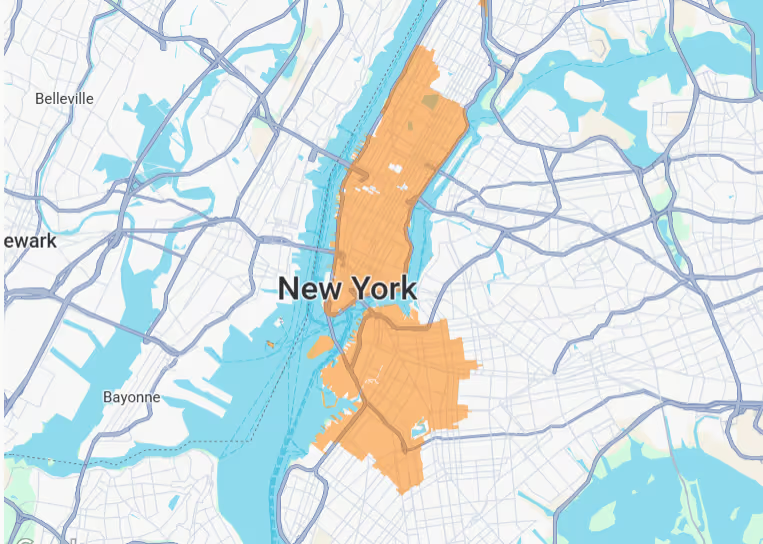Samsung Cooktop Repair: Volt & Vector
Volt & Vector Appliance Repair
23 Google reviews
Get reliable Samsung cooktop repair across Brooklyn & Manhattan with Volt & Vector. Fast service and a $99 diagnostic fee make it easy!
Local techs
+1 (332) 333-1709
.avif)

ZIP coverage — Brooklyn, Manhattan & select Queens
Use the ZIP code checker to see if we can come out to your building. If your ZIP is listed, we can usually offer same-day or next-day appliance repair, depending on parts and schedule. If your ZIP code is outside our current service area, you can still reach out — in some cases we may be able to help, or recommend a trusted partner nearby.
Samsung Cooktop Repair: Volt & Vector
Samsung Cooktop Repair in NYC — Fast, Transparent, Guaranteed
Local, certified Samsung specialists for Brooklyn & Manhattan. We diagnose precisely, quote clearly, and work cleanly in condos/co-ops. $99 on-site diagnostic (credited toward repair) · 180-day parts & labor warranty · OEM parts only · Licensed & insured (COI available) · Arrival windows: 9–11, 11–1, 1–3, 3–5.
Quick Facts (NYC-Ready)
- Same-/next-day service below 96th Street
- Transparent estimates before any repair
- Technicians trained on Samsung gas, radiant electric, and induction platforms
Samsung Cooktop FAQ — Volt & Vector (NYC)
Local, certified Samsung specialists serving Brooklyn & Manhattan. $99 on-site diagnostic (credited toward repair) · 180-day parts & labor warranty · OEM parts only · Licensed & insured; COI available · Windows: 9–11, 11–1, 1–3, 3–5.
Safety & Basics
Q: I smell gas. What should I do?
A: Don’t switch anything on/off. Ventilate if safe, close the gas supply, evacuate, and call your utility/emergency services. Then contact us for leak testing and repair.
Q: Is a cracked glass cooktop safe to use?
A: No. Cracked ceramic glass can arc or cut skin and may expose live parts. Turn the breaker OFF and schedule service.
Q: My cooktop keeps clicking (gas). Normal?
A: Brief clicking is normal during ignition. Endless clicking usually means a wet/dirty igniter, misaligned burner cap, stuck spark switch, or a failed ignition module.
Q: I hear humming/buzzing (induction). Is that normal?
A: A soft hum at higher power is typical magnetics. Loud/erratic sounds can point to a cooling fan, loose ducting, or a failing power module—have it checked.
Error Codes & Locks (Model-Specific)
Samsung codes vary by platform (gas, radiant, induction). Use SmartThings/Smart Care or the tech sheet (under the unit) for exact meanings.
Q: What does E24 mean?
A: Commonly indicates over-temperature or a temperature-sensor/cooling issue (often on induction). Clear airflow to the cooling fan, let the unit cool, and power-cycle at the breaker for 3–5 minutes. If it returns, service is recommended.
Q: What does SE mean?
A: Often “Stuck Key/Touch” on Samsung touch UIs; on some models it may read as sensor error. Clean/dry the glass (moisture and cleaners can trigger false touches) and power-cycle. If SE persists, the touch board or harness may need service.
Q: The cooktop is locked and won’t respond.
A: Child/Control Lock may be on. Look for a lock icon or “Lo/LC” and follow the panel legend (e.g., press-and-hold the lock key 3–5 seconds). If it won’t clear, power-cycle at the breaker; if still locked, the UI or touch membrane may be faulted.
Q: “Pan not detected” on induction—why?
A: Use flat, ferrous cookware that fully covers the zone. Warped or too-small pans, paper towels between pan/glass, or overheated modules can cause this. Try another pan and let the unit cool.
Gas Cooktops (NG/LP)
Q: One burner won’t light or the flame is weak.
A: Check cap alignment and clean ports. For weak flame: confirm correct NG/LP orifices, proper regulator setting, and adequate supply pressure. Persistent issues can be clogged venturi, failing ignition parts, or pressure problems.
Q: Can you convert my Samsung cooktop from NG to LP (or back)?
A: Yes—with OEM conversion kits and calibrated instruments. We document pressures and label the unit per code.
Radiant Electric (Ceramic Glass)
Q: A radiant element doesn’t heat.
A: Likely an open element, failed limiter, or infinite switch issue. We test element resistance, limiter continuity, switch function, and connectors for heat damage.
Q: Hot-surface light stays on.
A: A stuck limiter or residual heat can keep the indicator lit. If it persists when cool, the limiter circuit may need replacement.
Induction
Q: Unit shuts down or throws overheat codes under heavy use.
A: Check ventilation space below, clear intake/exhaust paths, and ensure cabinets aren’t blocking airflow. We inspect cooling fans, heat sinks, and the power module (IGBT/PFC) temps.
Q: Random beeps or ghost touches.
A: Moisture on the glass, power noise, or a sensitive touch board. Clean/dry the surface, avoid overspray, and power-cycle. If recurring, we evaluate the UI, grounding, and wiring harness.
Leaks, Moisture & Installation
Q: Why is my Samsung cooktop leaking?
A: Gas units shouldn’t have water inside; “leaks” are usually cleaning moisture in the igniter area or spills wicking under the glass. Persistent moisture can corrode switches/igniters. We dry, test, and replace damaged parts; we also re-seal where the manufacturer allows.
Q: How much clearance/ventilation does my cooktop need?
A: Follow the model’s install guide for cutout size, clearance, and airflow. Insufficient space overheats electronics—especially on induction. We verify the cutout and airflow on site.
Power, Breakers & Nuisance Trips
Q: The breaker trips when I turn on multiple zones.
A: Could be a load/branch sizing issue, loose terminals, or a failing module. We check supply voltage/neutral/ground integrity, terminal torque, and inrush characteristics of the power board.
Q: Cooktop dead after cleaning.
A: Moisture in the touch area or under knobs can short controls. Let it dry fully, then power-cycle. If still dead, we check the UI and main board.
Care & Maintenance
Q: How often should I service my cooktop?
A: There’s no fixed interval, but annual checks help heavy-use kitchens—especially induction cooling paths and gas leak/pressure checks.
Q: Best way to clean the glass?
A: Use a cooktop cream and non-abrasive pad. Avoid flooding edges or spraying directly over touch controls—moisture causes false touches and SE errors.
Q: Preventive tips?
A: Keep ventilation paths clear, use correct cookware size, reseat burner caps after cleaning, and avoid oversized trays that trap heat over controls.
Understanding Samsung Error Codes
Code E-OA: This code signals that the oven is overheating.
Possible Causes:
- The oven temperature sensor is faulty.
- There may be a malfunction in the oven control board.
- Ventilation issues could be causing heat to build up.
User Actions:
- Turn off the oven and allow it to cool completely.
- Check that nothing is blocking air vents.
- Inspect the oven sensor for any visible damage.
Code E24: This code indicates that the cooktop has detected an unusually high temperature.
Possible Causes:
- The cooktop's temperature sensor may be malfunctioning.
- An object on the cooktop may be causing excessive heat.
- Airflow around the cooktop may be restricted.
User Actions:
- Turn off the cooktop and allow it to cool down.
- Check for any obstructions on the cooktop surface.
- Ensure that vents around the cooktop are not blocked.
Code SE: This code indicates a function error within the system, possibly due to a short in the controls.
Possible Causes:
- A button on the control panel may be stuck or shorted.
- Issues with the oven sensor could lead to this error.
- There may be a malfunction in the control board.
User Actions:
- Turn off the cooktop and unplug it for a few minutes before plugging back in.
- Inspect the control panel for any stuck buttons or debris.
- If the issue persists, contact a technician for further assistance.
Expert Advice: Repair or Replace?
If your cooktop is over 10 years old, it may be more cost-effective to replace it rather than repair it frequently. Consider repair costs versus the unit's value and the type of problem you're experiencing.
In Brooklyn and Manhattan, common issues often warrant repair, especially if they fall within the manufacturer's warranty period, ensuring you get the best value for your investment.
About our company:
Volt & Vector — Professional Appliance Repair Service in New York City
Diagnostic Workflow
- Model & serial verification (rating-plate photo).
- Functional test — run service mode, retrieve stored error codes.
- Electrical measurement — voltage, amperage, resistance under load.
- Mechanical check — motors, valves, belts, pumps, airflow or coolant path.
- Safety validation — water, gas, or vent integrity.
- Estimate issued before repair authorization.
If the client proceeds, the diagnostic credit applies in full. Every visit is logged with readings and photos for warranty traceability.
Parts & Sourcing
Only factory-original OEM components from authorized distributors.
Each part is tracked by model, serial, and invoice ID.
We never use rebuilt electronics or aftermarket substitutes.
Refrigeration and sealed-system work performed by EPA 608-certified technicians.
Warranty & Compliance
- 180 days on both parts and labor.
- Documentation stored in secure cloud system for repeat-visit reference.
- COI and technician ID available for building management.
- All work complies with NYC Electrical & Plumbing Codes §27-740 et seq.
Safety Protocol
If there’s water leakage, cut the supply immediately.
If smoke, odor, or sparks appear — shut the breaker and disconnect.
Technicians arrive with insulated tools, PPE, and isolation testers rated to 1000 V CAT III.
Pre-Visit Checklist for Clients
- Confirm building access / doorman / elevator window.
- Provide brand + model + symptom (photo helps).
- Clear workspace around appliance (2–3 ft).
- If possible, note any error code or behavior pattern.
These steps reduce diagnostic time and ensure correct parts are dispatched.
Service Coverage
Brooklyn: Downtown, Brooklyn Heights, Park Slope, Williamsburg, Greenpoint, Bed-Stuy, Carroll Gardens, Prospect Heights, Flatbush.
Manhattan: FiDi, Battery Park, Tribeca, SoHo, Chelsea, Midtown, UES, UWS, Gramercy, Village.
Text alerts are sent ≈ 30 minutes before arrival.
Data & Documentation
Volt & Vector maintains a private service database linking symptoms, part numbers, and test results across thousands of NYC appliances.
Why Clients Choose Volt & Vector
- Local operation: no subcontract chains.
- Direct communication: text / email / call — no call-center delays.
- Technical credibility: trained on Bosch Benchmark, Miele W1/T1, Sub-Zero sealed-system platforms.
- COI & property compliance: trusted by NYC building management.
- Fast logistics: inventory and supplier network inside the five boroughs.
Commitment to Repair Ethics
Every successful repair extends appliance life, lowers energy waste, and avoids landfill scrap.
All replaced components are recycled through certified NYC facilities.
“Repair First” is our environmental and professional baseline.
Schedule Service
- Text or call (332) 333-1709.
- Send appliance info + photos.
- Receive ETA and firm estimate.
- Technician arrives within your chosen window, completes service, provides digital invoice and warranty.
Volt & Vector — Built for NYC by Real Techs
Professional diagnostics, OEM components, documented results.
Transparent pricing. Zero guessing. Guaranteed repair.
ZIP coverage — Brooklyn, Manhattan & select Queens
Use the ZIP code checker to see if we can come out to your building. If your ZIP is listed, we can usually offer same-day or next-day appliance repair, depending on parts and schedule. If your ZIP code is outside our current service area, you can still reach out — in some cases we may be able to help, or recommend a trusted partner nearby.
Primary Services
See the full catalog of our services—organized by brand and by appliance—right here.



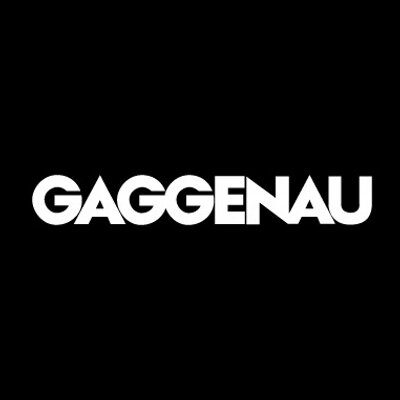
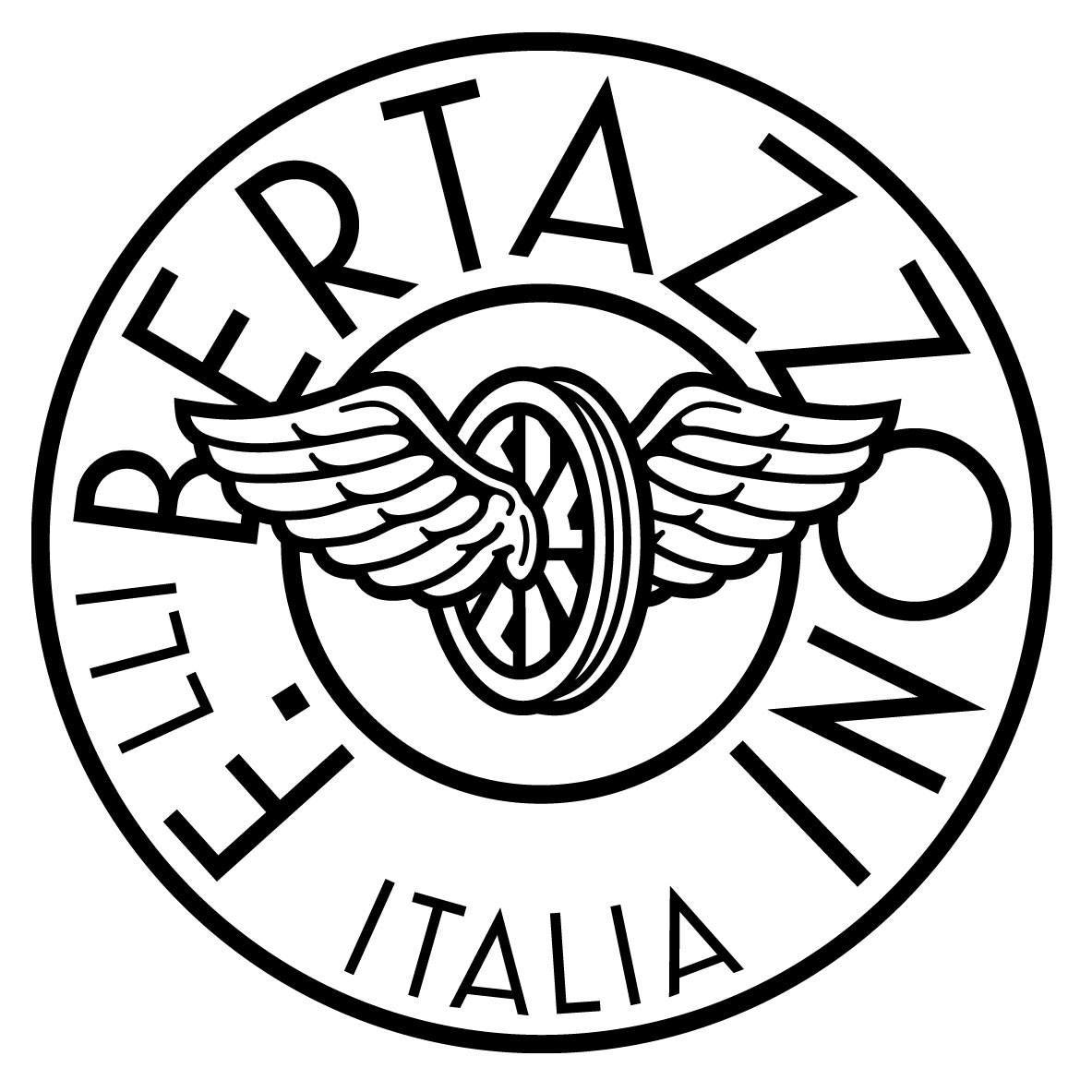



















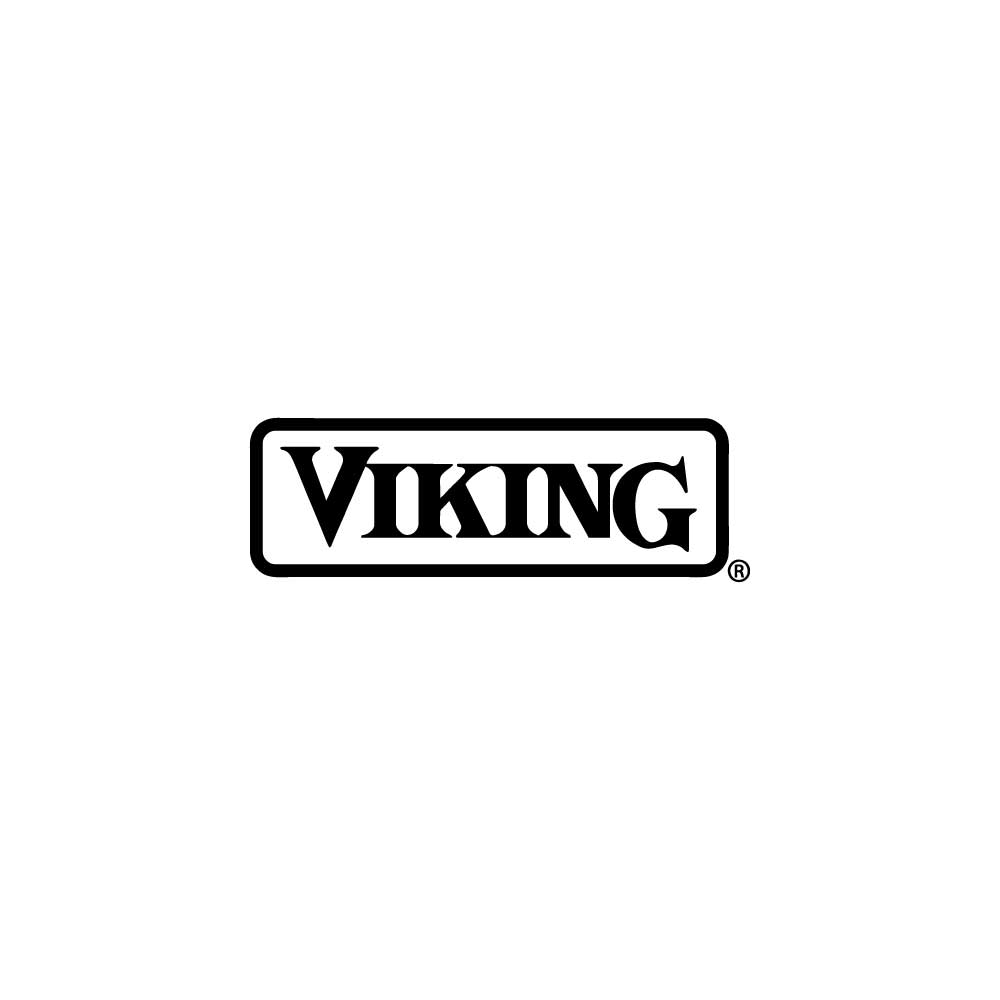


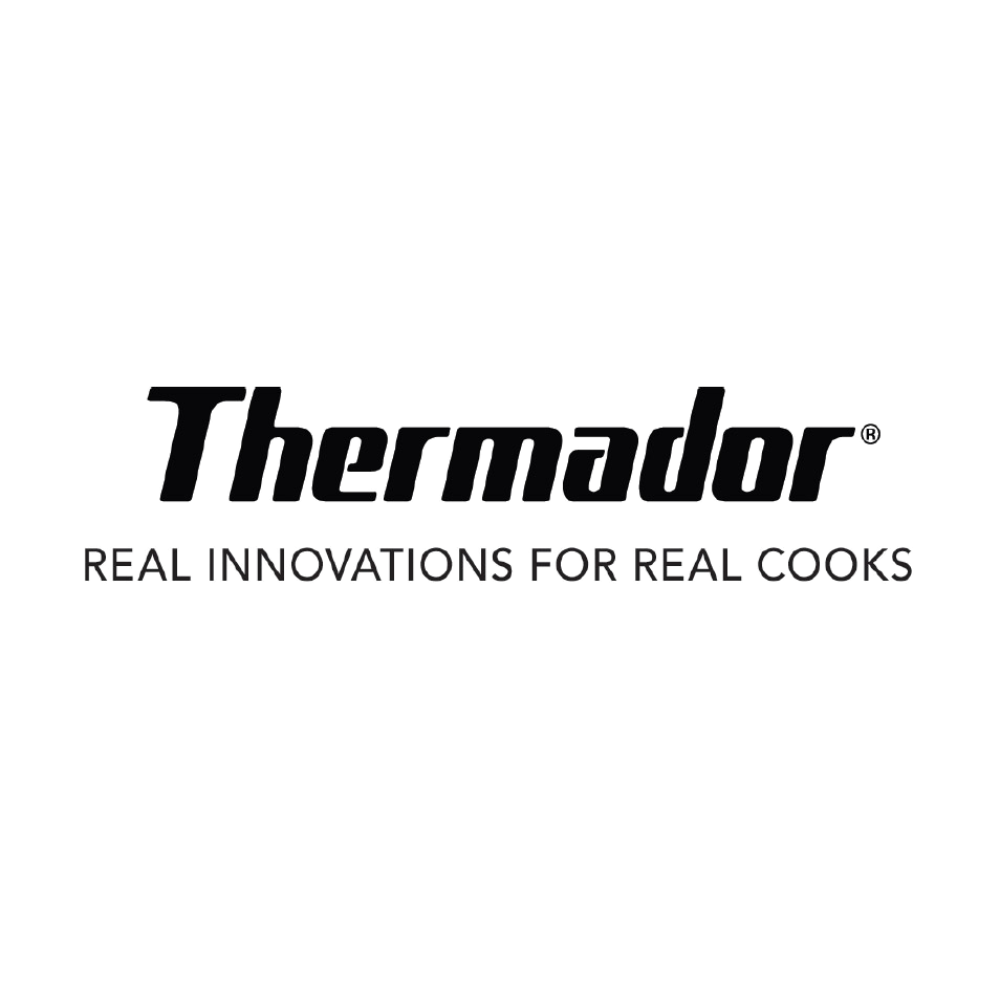







.svg.png)



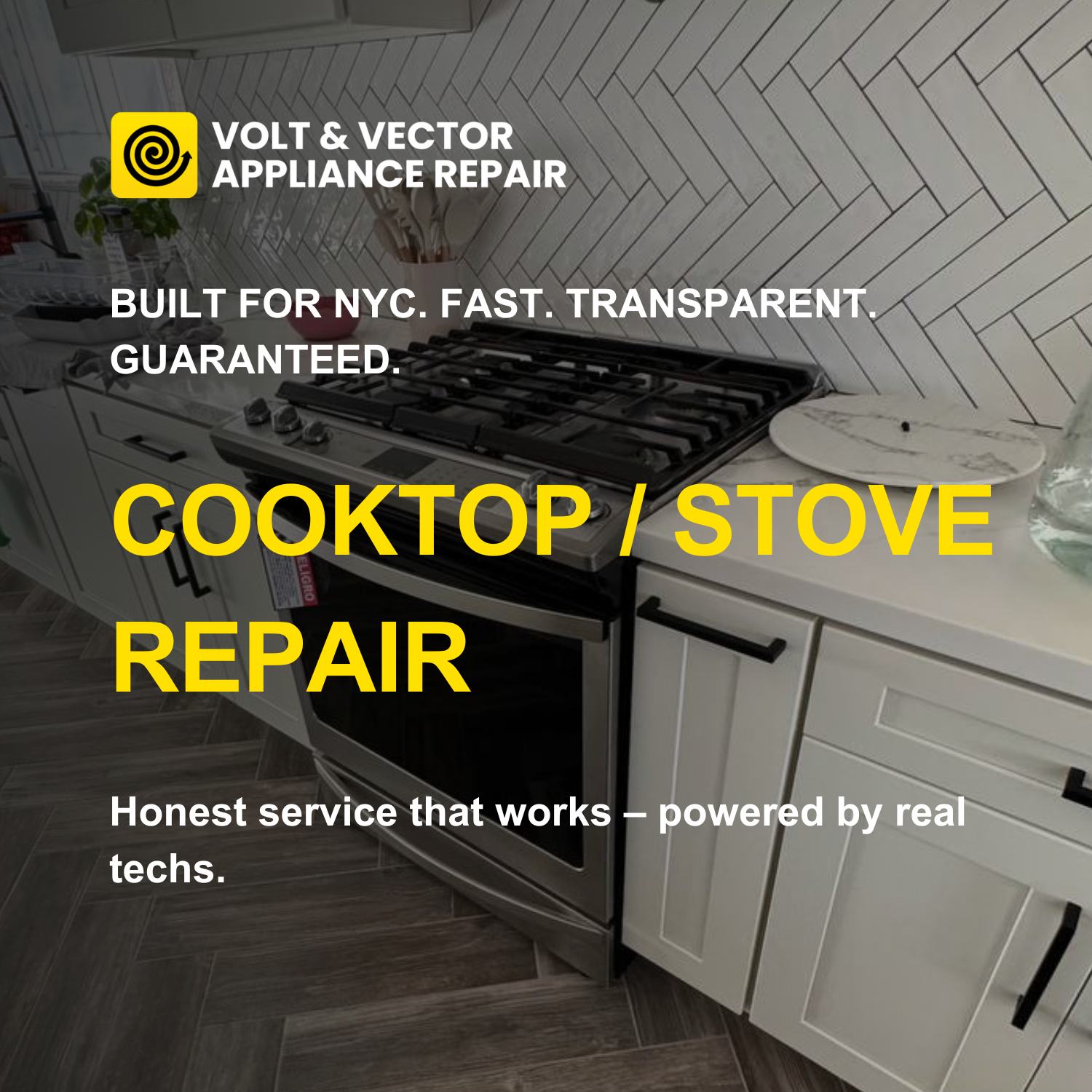



.png)
.png)



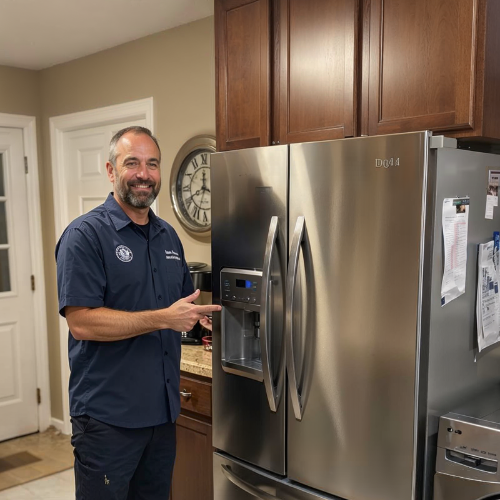
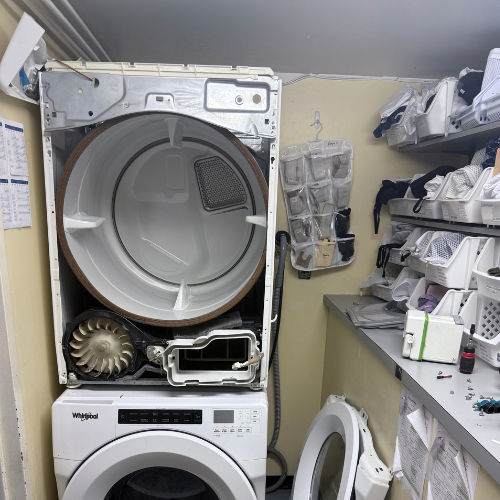
.png)
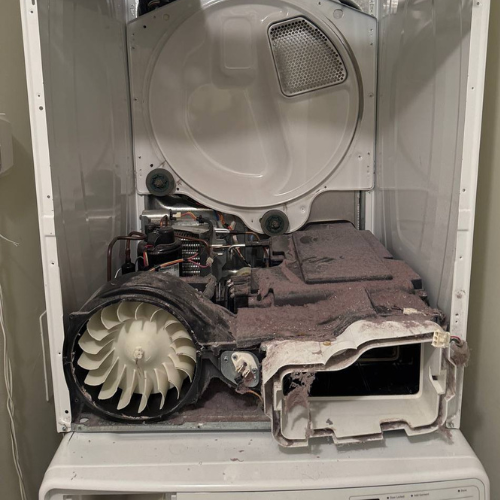
.png)
